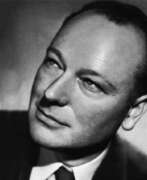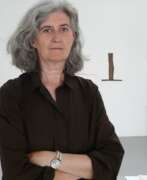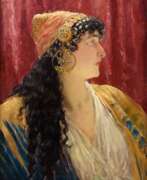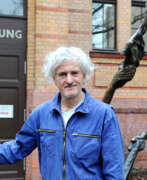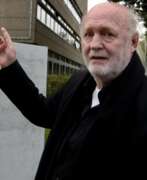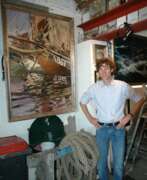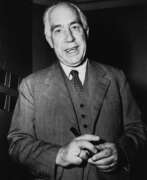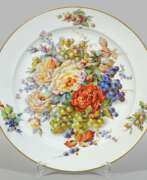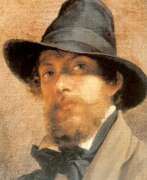Educators 20th century


Sultan Shamsutdinovich Abaev (Russian: Султан Шамсутдинович Абаев), a Chechen and Russian artist born on November 1, 1954, in Khaidarkan, Soviet Union, is celebrated for his distinctive contributions to landscape art. A member of the Artists Unions of Saint Petersburg and the Chechen Republic, Abaev's work exemplifies his profound connection to his cultural roots and the rich landscapes that inspire him.
Educated at the prestigious Repin Institute of Painting, Sculpture, and Architecture in Saint Petersburg, Abaev has been honored multiple times for his artistic achievements, including receiving the title of Honored Artist of the Russian Federation. His works have been internationally recognized, finding places in private collections across countries such as Germany, the United States, and Japan.
Abaev's career also includes time spent abroad in Sri Lanka and South Korea from 1991 to 1993, where he expanded his artistic horizons and produced a series of paintings influenced by these experiences. Today, his works are sought after by collectors, especially those interested in landscapes and cultural narratives embedded in art.
Stay updated on exhibitions and sales related to Sultan Shamsutdinovich Abaev's enchanting landscapes by signing up for our exclusive alerts. These updates are essential for collectors and art connoisseurs interested in owning a piece of Chechen and Russian art history.


Mikhail Georgievich Abakumov (Russian: Михаил Георгиевич Абакумов) was a Russian artist, celebrated for his diverse artistic contributions and his deep connection to his homeland, Kolomna. Born in 1948, Abakumov became a prominent figure in the Russian art scene, recognized as a People's Artist of Russia and a dedicated teacher and community leader in Kolomna.
Abakumov's artistic oeuvre includes industrial and genre canvases, evocative landscapes, and intimate portraits, which are held in high esteem across Russia and in private collections worldwide. Notable works like "Metallurg" (1974) and "Spring Morning" (1996) showcase his ability to capture the essence of Russian life and landscapes. His art has been exhibited extensively within Russia and internationally, including over thirty solo exhibitions since 1979, contributing significantly to the cultural tapestry of the Soviet and post-Soviet periods.
His works are part of prestigious collections, including the State Tretyakov Gallery, and have been featured in various museums across cities like Moscow, St. Petersburg, and internationally.
For those interested in exploring Russian art and the legacy of Mikhail Georgievich Abakumov, signing up for updates on exhibitions and sales of his artworks can provide valuable insights and opportunities. Join our community to stay informed about events and auctions featuring Abakumov's remarkable works.


Terry Roger Adkins was an American artist. He was Professor of Fine Arts in the School of Design at the University of Pennsylvania.
Adkins was an interdisciplinary artist whose practice included sculpture, performance, video, and photography. His artworks were often inspired by, dedicated to, or referred to musicians or musical instruments; specific installations and exhibitions were sometimes labeled "recitals." Sometimes, these arrangements of sculptures were "activated" in performances by Adkins' collaborative performance group, the Lone Wolf Recital Corps.


Gapar Aitievich Aitiev (Russian: Гапар Айтиевич Айтиев), a pioneering figure in Soviet Kyrgyz art, was born in 1912 and became a cornerstone of Kyrgyz cultural heritage through his impactful contributions as an artist and educator. Aitiev's journey in art began at the Moscow Art School in Memory of 1905, where he studied under N. P. Krymov between 1935 and 1938, laying the groundwork for his illustrious career. His profound connection to his Kyrgyz roots was reflected in his artwork, characterized by epic, poetic landscapes of Kyrgyzstan, such as "Midday on Issyk Kul" (1954), and detailed portraits like the "Gallery of portraits of contemporaries" (1979). Aitiev's contributions to the art world earned him the prestigious titles of People’s Artist of the USSR and Hero of Socialist Labor, marking his influence on Soviet and Kyrgyz art history.
The Gapar Aitiev Kyrgyz National Museum of Fine Arts, named in his honor, stands as a testament to his legacy, showcasing not only his work but also a broad spectrum of Kyrgyz and Russian art, spanning from traditional Kyrgyz artifacts to contemporary works post-independence. This museum, alongside the Gapar Aitiev Memorial Studio Museum in Bishkek, provides insight into Aitiev's life, offering a personal glance at his workspaces and the art that filled his surroundings. These institutions preserve and celebrate Aitiev's dedication to portraying the tranquil beauty of Kyrgyz landscapes and the spirit of its people, making his work an integral part of Kyrgyz national identity.
For those interested in the rich tapestry of Central Asian art, visiting these museums in Bishkek is a journey through the heart of Kyrgyz culture and history, brought alive by Aitiev's artistic vision. His work not only captures the essence of Kyrgyzstan's landscapes and people but also serves as a bridge between the traditional and the modern, embodying the nation's cultural evolution.
To stay updated on exhibitions and events celebrating Gapar Aitievich Aitiev's legacy and to explore more about his contributions to art and culture, consider signing up for updates. This subscription will keep you informed about new product sales and auction events dedicated to Aitiev's work, ensuring that enthusiasts and collectors alike remain connected to the vibrant world of Kyrgyz art.


Vladimir Ivanovich Akulov (Russian: Владимир Иванович Акулов) is a Soviet and contemporary Belarusian artist. He is known as a painter, graphic artist and teacher, a representative of the second wave of Belarusian avant-garde.
Vladimir Akulov in his work has developed a unique style under the influence of expressionism, cubism, primitivism, fauvism. He is a master of portrait, landscape, still life, compositions with symbolic and allegorical subjects, illustrations of literary works. During his career the artist created several cycles of portraits, including those of famous people.


Tamam Al-Akhal is a Palestinian artist and educator living in Jordan. She studied at the Fine Arts College in Cairo. From 1957 to 1960, she taught art at the Makassed Girls College in Beirut. In 1959, she married Ismail Shammout. Al-Akhal has exhibited in Egypt, Lebanon, Jerusalem, Jordan, the United States, Kuwait, England, China, Morocco, Berlin, Paris, Rome, and Vienna. She gave a series of lectures at the Jordan National Gallery of Fine Arts in 2009. Her art appeared on more than a dozen covers of Palestinian Affairs, a magazine published by the Palestine Liberation Organization. She was also head of the PLO's Arts and Heritage section. With her husband, she painted a series of large murals known as "Palestine: The Exodus and the Odyssey."


Manuel Khristoforovich Alajalov (Russian: Мануил Христофорович Аладжалов) was a prominent Russian and Soviet landscape painter and educator, born in 1862 in Nakhichevan-on-Don. Alajalov's work is distinguished by his exquisite landscapes that capture the essence of the Russian countryside. His paintings are noted for their masterful use of light and shadow, bringing a serene and lifelike quality to his depictions of nature.
Alajalov's career was marked by a deep commitment to portraying the natural world with authenticity and emotion. His art reflects a profound appreciation for the tranquility and beauty of rural Russia, making him a significant figure in the history of Russian art. Alajalov's legacy as a teacher also influenced many aspiring artists of his time, further cementing his place in the artistic community.
Alajalov's works are showcased in several major Russian museums, including the State Tretyakov Gallery, where art enthusiasts can experience his contribution to landscape painting. His paintings continue to be celebrated for their technical excellence and emotional depth, attracting collectors and admirers from around the world.
For updates on new product sales and auction events related to Manuel Khristoforovich Alajalov, sign up for our newsletter. Stay informed about exclusive opportunities to own a piece of this celebrated artist's legacy.


Josef Albers was a German-born artist and educator. The first living artist to be given a solo shows at MoMA and at the Metropolitan Museum of Art in New York, he taught at the Bauhaus and Black Mountain College, headed Yale University's department of design, and is considered one of the most influential teachers of the visual arts in the twentieth century.
As an artist, Albers worked in several disciplines, including photography, typography, murals and printmaking. He is best known for his work as an abstract painter and a theorist. His book Interaction of Color was published in 1963.


Yuri Albert is a contemporary Russian artist, art theorist and educator; a member of the Moscow conceptualist circle. He currently lives and works in Moscow and Cologne.
Yuri Albert's works are in the collections of major Russian and international institutions.


Laure Albin-Guillot was a French artist and photographer. She is best known for her pioneering work in photography and for her contributions to the development of the medium in France during the early 20th century.
Albin-Guillot's early photographic work was focused on portraiture, and she became known for her elegant and striking images of celebrities and other notable figures. She later expanded her practice to include still life and landscape photography, and she was also a skilled photojournalist.
In addition to her photography, Albin-Guillot was an important figure in the Parisian art world, and she was involved in the development of modernist movements such as Cubism and Surrealism. She was a member of the Société des Artistes Décorateurs and was also involved in the organization of several major international exhibitions, including the Exposition Internationale des Arts Décoratifs et Industriels Modernes in Paris in 1925.
Albin-Guillot was also a prolific writer and educator, and she wrote several books on photography and art history. She taught photography at the École Estienne in Paris, and she also founded her own photography studio, which became known for its innovative use of lighting and composition.
Today, Albin-Guillot's work is recognized as an important contribution to the development of modern photography, and her photographs are held in the collections of major museums around the world, including the Museum of Modern Art in New York, the Centre Pompidou in Paris, and the Victoria and Albert Museum in London.


Antonio Ambrogio Alcati was an Italian academic painter, portraitist, master of frescoes and teacher. He studied painting at the Vercelli Institute of Fine Arts and the Brera Academy of Fine Arts.
Ambrogio Alcati's work is also influenced by Impressionism.
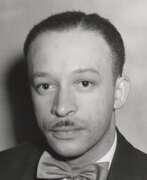

Charles Henry Alston was a mid-twentieth-century American artist. He is known as a graphic and muralist painter as well as a sculptor, illustrator, and educator who lived and worked in New York City's Harlem neighborhood.
Charles Alston was an activist in the so-called "Harlem Renaissance." He became the first African-American director of the U.S. Federal Art Project. The artist created murals for Harlem Hospital as well as a number of cultural and administrative buildings in New York City. Alston is the author of a bust of Martin Luther King, Jr. which was the first depiction of an African American to be displayed at the White House in Washington, DC.


Harold Ambellan is an American painter and sculptor.
He studied sculpture and fine art in Buffalo before moving to New York City. The human figure is central to Harold Ambellan's work. He created monumental figures and drew extensively, leaving thousands of drawings. Ambellan was one of the participants in Roosevelt's Federal Art Project, which hired hundreds of artists during the Great Depression who collectively created more than 100,000 paintings and over 18,000 sculptures.
Ambellan remained committed to figuration in both his sculpture and painting. He was elected president of the Sculptors Guild of America in 1941, and that same year his work was exhibited in group shows at the Metropolitan Museum of Art in New York and the Academy of Fine Arts in Philadelphia.
In 1944, Ambellan participated in the liberation of Normandy as part of the U.S. Navy, then taught three-dimensional art at the Workshop School in New York City. In 1954, for political reasons, Ambellan moved to France and remained there for the rest of his life, working and exhibiting throughout Europe.


Mikhail Konstantinovich Anikushin (Russian: Михаил Константинович Аникушин) was a Soviet and Russian sculptor, celebrated for his monumental works that have left a lasting legacy in the art world. Born on September 19, 1917, in Moscow, Anikushin's sculptures are a testament to his profound skill and dedication to depicting historical and cultural figures with a dynamic expressiveness that brought them to life. His most notable works include monuments dedicated to Alexander Pushkin, found at the Pushkinskaya Station of the Saint Petersburg Metro and Arts Square in Saint Petersburg, as well as a monument to Vladimir Lenin at Moskovskaya Square in Saint Petersburg.
Anikushin's career was distinguished not only by his artistic achievements but also by the honors he received, reflecting the impact of his work on Russian culture. He was awarded the title of "Honored Artist of the RSFSR" in 1957, "People's Artist of the USSR" in 1963, and became a full member (academician) of the Russian Academy of Arts in 1962. His dedication to capturing the spirit and essence of his subjects, particularly Alexander Pushkin and Vladimir Lenin, showcases his innovative approach to sculpture, moving beyond traditional standards to depict his subjects in active, dynamic poses.
The Presidential Library collection dedicated to Anikushin commemorates the 100th anniversary of his birth, highlighting his significant contributions to Russian sculpture in the 20th century. Anikushin's works are integral to the aesthetic and cultural landscape of Leningrad (now Saint Petersburg), contributing to the city's historical and artistic identity. The collection also emphasizes his role in the community, including his public service and the enduring influence of his artistic vision on generations to come.
Collectors and experts in art and antiques recognize Mikhail Konstantinovich Anikushin not only for his technical prowess but also for his ability to imbue his sculptures with a sense of movement and emotional depth that resonates with viewers. His works remain landmarks, celebrated both in Russia and internationally, for their contribution to the cultural heritage.
For those interested in exploring the works and legacy of Mikhail Konstantinovich Anikushin further, signing up for updates can provide invaluable insights into new discoveries, exhibitions, and auction events related to this influential sculptor. This subscription is an opportunity to stay informed about the sales and exhibitions that continue to celebrate Anikushin's remarkable contribution to the world of sculpture.


Vladislav Leopoldovich Anisovich (Russian: Владислав Леопольдович Анисович) was a Soviet artist of the mid-twentieth century. He is known as a painter, graphic artist and teacher, a representative of the Leningrad school of painting.
Vladislav Anisovich participated in various exhibitions since 1935. His work included portraits, historical and genre compositions, as well as landscapes. Among the famous paintings of the artist are "The passage of K. Voroshilov's detachment from Lugansk to Tsaritsyn", "Assault on Perekop" and others. The master taught at the Leningrad Institute of Painting, Sculpture and Architecture.
His works are in various museums and private collections in many countries, including the State Russian Museum.


Horst Antes was a German painter, graphic artist and sculptor, a pioneer of the new figurative painting in Germany.
After studying at the Karlsruhe Academy of Fine Arts from 1957 to 1959, Antes taught there himself and later became a professor there.
Antes became known for the Kopffüßler (head-foot) image, which has been a recurring theme in his paintings, sculptures and graphic works since the early 1960s. Antes' work is represented in several major collections in Berlin, Hamburg, Cologne and elsewhere in Germany.


Richard Joseph Anuszkiewicz was a prominent American artist celebrated for his foundational contributions to the Op Art movement. Born in Erie, Pennsylvania, to Polish immigrant parents, Anuszkiewicz's early talent in art earned him scholarships, leading to his studies at the Cleveland Institute of Art and later, the Yale University School of Art and Architecture under Josef Albers. Albers, a pivotal figure in his career, inspired Anuszkiewicz to explore the intricacies of color and geometric forms, steering him away from realism towards a more abstract and mathematical approach to art.
Anuszkiewicz gained prominence in the 1960s, notably through his participation in the landmark exhibition "The Responsive Eye" at MoMA, which played a crucial role in propelling Op Art into mainstream recognition. His works, characterized by vibrant colors and geometric patterns, create illusions of depth and movement, challenging viewers' perceptions and offering a mesmerizing visual experience. His technique was not just about the visual impact; it was a meticulous, mathematical exploration of color and form, aiming to achieve a 'very, very mechanistic geometry' that was nonetheless romantic in its precision and purity.
Throughout his career, Anuszkiewicz's art evolved, yet he remained faithful to his intellectual and analytical approach, focusing on the optical effects of color and shape. His contributions extended beyond painting to include printmaking and sculpture, showcasing his versatility as an artist. Notably, his works are housed in prestigious collections around the world, including the Metropolitan Museum of Art, Museum of Modern Art, and the Whitney Museum of American Art, among others.
For collectors and experts in art and antiques, Anuszkiewicz's work embodies the confluence of scientific precision and artistic expression, offering insights into the profound impact of color and form on human perception. His legacy continues to inspire and challenge the boundaries of visual art.
If you're captivated by the transformative power of Op Art and the pioneering work of Richard Joseph Anuszkiewicz, sign up for updates. Stay informed about new product sales and auction events related to this remarkable artist's oeuvre, enriching your collection with pieces that resonate with history and innovation.


Boris Vladimirovich Arakcheyev (Russian: Борис Владимирович Аракчеев) was a Soviet and Belarusian artist of the second half of the twentieth and early twenty-first centuries. He is known as a painter and teacher.
Boris Arakcheyev worked in easel painting in the genres of landscape, still life, thematic paintings and battle scenes. A series of portraits of contemporaries and famous people occupies a special place in his creative heritage. He also worked in monumental painting - he was one of the creators of the diorama "Minsk Cauldron" in the Museum of the History of the Great Patriotic War of Belarus.


Christian Arnold was a German painter and graphic artist. He is best known for his landscape paintings that often depicted the rural and coastal regions of northern Germany.
Arnold studied at the Academy of Fine Arts in Munich and later taught at the School of Arts and Crafts in Bremen. His work was heavily influenced by the German Expressionist movement, and he often used bold colors and thick brushstrokes to create a sense of emotional intensity in his paintings.
In addition to his landscapes, Arnold also produced numerous portraits, still lifes, and religious works. He worked in a variety of mediums, including oil paints, watercolors, and printmaking.
Arnold's work was exhibited widely during his lifetime, and he received numerous awards and honors for his contributions to the arts. Today, his paintings are held in collections around the world, including the National Gallery in Berlin and the Kunsthalle Bremen.


Zinaida Antonovna Astapovich-Bocharova (Russian: Зинаида Антоновна Астапович-Бочарова) was a Russian, Soviet and Belarusian artist of the twentieth century. She is known as a painter, graphic artist and teacher.
Zinaida Astapovich-Bocharova worked in the genres of portrait, landscape, propaganda poster, as well as book illustration - mainly for fairy tale books. She painted in watercolor, oil, pencil, charcoal, gouache, and pastel. Much of her work from the 1930s and 1940s was lost during the evacuation of the artist from besieged Leningrad.


Hermann Bachmann is a German artist, graphic designer and teacher.
Hermann studied at the School of Applied Arts Offenbach am Main and served in the army during World War II. In 1945, Bachmann returned to his hometown and joined the artists of the Halle School. And in 1953 he fled to West Berlin, whose creative atmosphere was closer to him.
In 1957 Hermann Bachmann became a teacher and later a professor at the University of Fine Arts in Berlin, among his students many famous artists. He was a member of the Association of German Artists.


Vasily Nikolayevich Baksheyev (Russian: Василий Николаевич Бакшеев) was a distinguished Russian painter, celebrated for his contributions to landscape, interior, still life, and genre painting. His works are emblematic of the Union of Russian Artists' spirit, a movement he was closely aligned with throughout his career. Born in Moscow in 1862, Baksheyev was a prodigious talent who honed his craft at the esteemed Moscow School of Painting, Sculpture, and Architecture from 1877 to 1888, under the tutelage of luminaries such as Vladimir Makovsky, A. K. Savrasov, and V. D. Polenov. His artistic journey was marked by a significant award early on—a large silver medal for "The Return of Pilgrimage" in 1889—and travels to cultural hubs like Paris and Munich in 1895, which broadened his artistic horizons.
Baksheyev's artistry evolved over the years, from initial genre pictures to a profound exploration of landscape painting, for which he is most renowned. His works, especially from the Soviet era, continue the rich tradition of Russian lyrical landscape, imbued with a poetic quality that captures the essence of nature's transient beauty. His teaching career and efforts in organizing regional museums further underscore his commitment to art and community. Baksheyev's legacy is preserved in his poignant and luminous paintings, such as "Twilight," "Birches," and "Sunny Day," which offer a glimpse into the serene and vibrant landscapes of the Tarusa region. His work remains an invaluable part of Russia's cultural heritage, housed in numerous museums across the country and celebrated for its artistic integrity and emotional depth.
For art collectors and enthusiasts, Baksheyev's oeuvre represents a pivotal chapter in the evolution of Russian painting, characterized by its lyrical beauty and emotive power. His ability to blend impressionistic brushwork with symbolic imagery creates a unique visual language that speaks to the heart of the Russian landscape tradition.
To stay updated on new insights and opportunities related to Vasily Nikolayevich Baksheyev, including sales and auction events, signing up for updates is highly recommended. This subscription ensures that enthusiasts and collectors alike are always informed about the latest developments and available works related to this exceptional artist.


Sabine Baring-Gould was a Victorian British clergyman, poet, writer and folklorist.
He traveled extensively in Europe, studied at Clare College, Cambridge, was ordained in the Church of England in 1864, and was appointed vicar at Horbury. Baring-Gould was a polyglot and knew six languages. Despite his ministry, he had a serious interest in supernatural phenomena and in 1865 published a book called The Book of Werewolves.
In addition to this, Baring-Gould was interested in a wide range of subjects. His work is diverse and covered theology, history, poetry, hymns, fiction, biography, travel, social commentary, and folklore. Baring-Gould collected the folk songs of old English singers, personally visiting them and recording the words and music. In 1889 he published a collection of Songs of the West in four parts, of which he was proud, and also wrote several patriotic hymns.
Baring-Gould was a very prolific writer: during his life he wrote many novels, published short stories in periodicals, the popular "Curious Myths of the Middle Ages," and others, his bibliography numbering some 1,250 works.


Otto Baum is a German sculptor and university lecturer and member of the German Artists' Association.
He studied painting at the Stuttgart Academy of Art and sculpture at the same time. From the mid-1930s, the National Socialists who came to power in Germany forbade Baum to exhibit or even work, and he was persecuted as a representative of "degenerate art".
After the war, Otto Baum was appointed to teach at the Stuttgart Academy of Art and was regarded as the most progressive and extremely critical teacher among the young students at the academy.
Otto Baum is considered one of the most important representatives of classical modernism, who had a significant influence on European sculpture in the second half of the 20th century both through his work and as a teacher.


Moritz Baumgartl is a German painter, graphic artist and university professor living in Stuttgart.
Moritz studied at the Stuttgart State Academy of Fine Arts and worked for a long time as an art teacher at the Friedrich Eugens Gymnasium in Stuttgart. Baumgartl founded the art group "Stuttgart School" together with the artists Axel Arndt and Adam Lüde Döring.


Ekaterina Feodorovna Belashova (Russian: Екатерина Фёдоровна Белашова) was a Russian sculptor renowned for her profound contributions to Soviet sculpture. Born in St. Petersburg in 1906, she later moved to Moscow to further her education and career. Belashova began her artistic journey at VKHUTEIN, studying under notable figures such as R. Bach and A. Matveev. Her career saw her become a revered professor at the Moscow Institute of Applied and Decorative Arts and the Moscow School of Industrial Arts.
Her works, celebrated for their delicate silhouettes and meticulous attention to proportions, delve into the emotional and physical resilience of individuals, particularly during the turbulent times of war. Belashova's sculptures often embody the spirit of her era, exploring themes of loss, hope, and the enduring strength of the human spirit. Notable works include "The Fighter," "Unvanquished," and a series dedicated to the memory of the victims of fascism, showcasing her ability to capture the essence of her subjects with both sensitivity and strength.
Belashova's sculpture, "Girl with a garland in her hair," exemplifies her skill in capturing youth and vitality, showcasing a young girl in a moment of introspection and grace. This piece highlights Belashova's mastery over bronze, a material she often utilized despite its scarcity in the post-war period.
Throughout her life, Belashova remained deeply connected to the art world, not only through her creations but also as an educator and influencer in the Soviet art scene. Her contributions were recognized with numerous awards, including the prestigious State Prize of the USSR. Belashova's legacy is one of artistic excellence and profound humanity, leaving an indelible mark on the world of sculpture.
For collectors and experts in art and antiques, Ekaterina Feodorovna Belashova's work offers a deep dive into the rich tapestry of Soviet-era sculpture, characterized by its emotional depth and aesthetic finesse. Sign up for updates on new product sales and auction events related to Ekaterina Feodorovna Belashova, and explore the enduring beauty of her contributions to the world of art.


Leland Bell, an American painter born in 1922 and passed away in 1991, is a figure whose artistic journey and output stand as a beacon of individuality and depth in the 20th-century art world. Bell's dedication to painting was profound, shaping a career that remained largely self-taught yet significantly influential. His work, characterized by a passionate engagement with both abstract and figurative painting, represents a unique blend that defied the dominant trends of his time, making him a crucial figure for collectors and art enthusiasts.
Bell's artistic signature is evident in his choice of subjects—still life, portraiture, and figure composition—handled with a distinctive blend of abstract principles and figurative clarity. His paintings are recognized for their bold contour lines, vibrant planes of color, and dynamic compositions, revealing a singular vision that bridges the abstract with the tangible. This approach allowed him to explore the depth of human and thematic elements with an intensity and psychological complexity, particularly seen in his self-portraits and family group scenes, which often carry a mythic quality, elevating everyday existence to the level of allegory.
Significant in Bell’s legacy is his ability to convey the essence of his subjects with a sculptural weight, granting them a presence that is both immediate and timeless. His paintings, such as the "Family Group with Butterfly" (1986-90) and his series of self-portraits, demonstrate a mastery of form and space that invites viewers into a deeply personal yet universally resonant world. Bell's influence extended beyond his canvas through his roles as a teacher and lecturer, where he passionately advocated for the artists he revered, contributing to a rich educational legacy that complemented his artistic achievements.
Bell's works are held in prestigious collections and have been the subject of retrospective exhibitions, such as at the Phillips Collection in Washington, DC, highlighting his enduring impact on American art. His dedication to exploring the nuances of form, color, and composition has left a lasting mark, ensuring his place among the notable artists of his generation.
For collectors and experts in the field of art and antiques, Leland Bell's oeuvre offers a compelling study in the power of painting to convey complex human emotions and narratives. His work remains a testament to the enduring relevance of figurative art in the modern era, and his contributions continue to inspire new generations of artists and collectors alike.
To stay informed about new discoveries, sales, and auction events related to Leland Bell's work, signing up for updates is a practical way to ensure you don't miss out on opportunities to engage with the legacy of this remarkable artist. This subscription is a business-like avenue to keep abreast of events that celebrate Bell’s artistic achievements and offer insights into his profound impact on the art world.


Saul Bellow, real name Solomon Bellows, is a Jewish American writer and Pulitzer Prize and Nobel Prize winner.
Sol Bellow was born in Canada to Jewish immigrant parents from St. Petersburg, Russia, and grew up in Chicago. He attended the University of Chicago and Northwestern University, majoring in anthropology and sociology. Chicago was the setting for many of his novels of the 1970s and 1980s. In 1993, he took a position in the English Department at Boston University.
Bellow wrote his first book, The Dangling Man (1944), while serving in the Merchant Marine during World War II, and he published the novel The Victim in 1947. Saul Bellow is considered one of the most important Jewish American writers who wrote after World War II. Like his predecessors, he offers a Jewish perspective on the themes of alienation and otherness in the difficult postwar era of fragmentation, translating the Yiddish American experience into English.
Bellow has received the world's highest honors for his works. In 1954, his novel The Adventures of Augie March won the National Book Award for fiction. In 1975, the Pulitzer Prize for his novel The Humboldt Gift; the International Herzog Literary Award; and the Croix de Chevalier des Arts et Lettres, France's highest literary honor for non-citizens. In 1976, Bellow was awarded the Nobel Prize for Literature.


George Wesley Bellows was an American realist painter, renowned for his vivid portrayals of urban life in New York City. Born on August 12, 1882, in Columbus, Ohio, Bellows moved to New York in 1904, where he became a central figure in the Ashcan School of painting. This group was known for its realistic and often gritty depictions of everyday city life. Bellows captured dynamic scenes ranging from boxing matches to bustling street views, applying vigorous brushwork that conveyed movement and emotion.
One of Bellows' most celebrated series was his boxing paintings like "Stag at Sharkey’s," which encapsulate the raw, dynamic energy of illegal prizefights in early 20th-century New York. Beyond the ring, his works such as "New York" and "Pennsylvania Excavation" reflected the rapid transformations of urban landscapes. His adaptation of lithography also marked a significant contribution to American art, offering a new medium for expressive possibilities.
Bellows' art is preserved in major institutions such as the Metropolitan Museum of Art and the Museum of Modern Art in New York. His ability to depict the vibrancy and complexity of urban life makes his work a valuable part of American art history.
For updates on exhibitions and available works of George Wesley Bellows, consider subscribing to our newsletter. This subscription will keep you informed about new sales and auction events specifically related to Bellows' art.


Piotr Petrovich Belousov (Russian: Пётр Петро́вич Белоу́сов) was a distinguished Soviet and Russian artist, born on May 3, 1912, in Berdyansk, and passed away on March 31, 1989, in Leningrad. He is widely celebrated for his contributions to the Leningrad School of Painting, having been an influential figure in shaping the artistic landscape of the region. His expertise extended across various mediums, including painting, etching, and graphic arts, with a notable focus on themes like the Bolshevik Revolution and historical Soviet figures like Lenin.
Belousov's educational and professional journey was deeply intertwined with the prestigious Ilya Repin Leningrad Institute of Painting, Sculpture and Architecture, where he both studied and later taught, eventually rising to the rank of professor and head of the drawing department by 1956. His career was marked by numerous accolades, including the titles of Honored Artist and People's Artist of the RSFSR, reflecting his significant impact on Russian art and education.
Throughout his life, Belousov participated in many exhibitions and his works are held in high esteem, not only in Russian state museums like the Russian Museum and the Tretyakov Gallery but also internationally. His pieces, particularly those that capture key moments in Soviet history and urban landscapes, remain influential and are sought after by collectors around the worl.
For enthusiasts of Soviet art and collectors interested in Belousov's works, staying updated on exhibitions and sales can provide valuable opportunities to acquire his art. To receive alerts about new product sales and auction events featuring Piotr Petrovich Belousov's works, signing up for updates is highly recommended.


Pavel Petrovich Benkov (Russian: Павел Петрович Беньков) was a Russian and Soviet artist of the first half of the twentieth century. He is known as a painter, graphic artist, theater decorator, and teacher.
Pavel Benkov created portraits, landscapes, cityscapes, genre paintings. His style in his mature years can be described as impressionist, with attention to color and light. In 1929 he moved to Central Asia, where his style took on unique characteristics, reflecting local landscapes and culture. His work has had a significant influence on the painting traditions of Uzbekistan and Central Asia.


Vilmos-József Istvanovich Berets (Russian: Вильмош-Йожеф Иштванович Берец) was a Ukrainian Soviet artist of the second half of the twentieth century of Hungarian origin. He is known as a painter, graphic artist, teacher, and art historian.
Berets created works mainly in easel graphics, among his most outstanding works are watercolor landscapes. Since 1950 he actively participated in art exhibitions. He was also the author of articles on the theory of art, as well as studies on various artists, including the work of Transcarpathian artists, in the course of which the master collected extensive archival material on the history of the local school of painting.


Alban Berg, full name Alban Maria Johannes Berg, was an Austrian composer, representative of expressionism in music, teacher and music critic.
A meeting with composer Arnold Schoenberg (1874-1951) in September 1904 played a decisive role in Berg's life. The latter saw talent in the young man and taught him free of charge for six years. In 1907 Berg performed his "Sonata for Piano" for the first time.
Alban Berg was very self-critical and worked on pieces for a long time. He composed orchestral music (including "Five Orchestral Songs," 1912), chamber music, songs, and two groundbreaking operas, "Wozzeck" (1925) and "Lulu" (1937). "Wozzeck," the most frequently performed theater work in the atonal idiom, is Berg's first attempt to address social issues within the framework of opera. However, its premiere turned into a scandal, with critics even calling the composer a musical fraud.
Only a few years after his death, Alban Berg was widely recognized as a composer of expression. He broke with tradition and mastered a radical technique, but at the same time he combined the old and the new and created, together with Schoenberg and Webern, the New Viennese School of the 20th century. Alban Berg was also an outstanding teacher of composition.
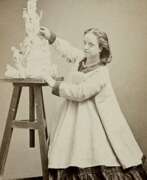

Hélène Bertaux, born Joséphine Charlotte Hélène Pilate, was a French painter and sculptor who achieved equal rights with men.
Hélène Pilate trained as a teenager in the workshop of her stepfather Pierre Hébert, where she modeled designs for watches, then regularly received commissions for small decorative bronze pieces. Aspiring to become a professional sculptor, she completed her studies with Augustin Dumont (1801-1884) in the academic tradition. The support of the imperial couple enabled her to become one of the few women to make a name for herself in the field of monumental sculpture: in 1864 she created the Fontaine Herbet for the Place Longueville in Amiens and during her career she received several prestigious commissions for religious and public buildings.
After achieving success and official recognition, Hélène Bertaux advocated for equality between men and women in the arts. In 1873, Hélène Bertaux opened her first sculpture studio, and in 1879, she opened another one with a sculpture school for women. Her students, including Clémence-Jeanne Eymard de Lanchâtre (1854-1894) and Jenny Weil (1851-1933), later won prizes at the Salon. The creation in 1881 of the Union of Women Painters and Sculptors, of which she was president from 1881 to 1894, marked a new step in her fight for gender equality in academic education. Hélène Bertaux became the first female member of the Salon jury and received a gold medal at the 1889 World's Fair.


Walead Beshty is an American conceptual artist, photographer, sculptor and writer who lives and works in Los Angeles.
Born in London, Great Britain, he studied at Bard College and received a Master of Fine Arts degree from Yale University in 2002, and holds academic positions at universities across the United States.
Beschty is best known for his work in photography, but his creative interest spans a wide range, including sculpture, painting, installation and video. For example, in one of his popular works, the artist mails a series of glass windows of various sizes in cardboard boxes, and then displays the cracked and broken windows, damaged in transit, over the boxes in which they were packed.


Joseph Binder, full name Joseph Friedrich Gustav Binder, was a German avant-garde painter, designer and graphic artist.
In the early 1930s, Joseph Binder worked on major brand commissions for Knorr, Reemtsma, Tekrum, Elida, Minera, Dujardin, Stella and Mercedes-Benz and earned fame as a style-defining industrial designer. In all, by the early 1960s, Binder had created more than 2,000 stamps and posters.
In painting, Binder favored cubism: geometrically stylized form is of great importance to the painter. He was also influenced by the Bauhaus school of art and the Blue Rider group.


Yulii Yulyevich Blumenthal (Russian: Юлий Юльевич Блюменталь) was a Russian and Soviet artist of the first half of the twentieth century of German origin. He is known as a painter and graphic artist who played an important role in the development of Bashkir fine arts.
Yulii Blumenthal created portraits, landscapes and genre works, including those reflecting the culture and life of the Bashkir people, such as "Bashkir Rider" and "Behind Shearing Sheep". Being the director of the Bashkir State Art Museum in 1926-1935, the master played a significant role in laying the foundations of professional museum accounting and documentation.


Grigory Mikhailovich Bobrovsky (Russian: Григорий Михайлович Бобровский) was a distinguished Russian painter born in Vitebsk in 1873 and passed away in Leningrad in 1942. His academic journey in the arts began at the prestigious Academy of Arts under the tutelage of Ilya Repin between 1893 and 1900, where he honed his craft and graduated with the title of artist for his painting "Evening." By 1916, Bobrovsky was recognized as an academician, contributing significantly to the Russian art scene with his evocative landscapes and scenes capturing early 20th-century life.
Bobrovsky's artwork is celebrated for its free manner of painting, decorative expressiveness of color, attention to lighting effects, and the fragmentariness of composition. His works, which were influenced by both the Union of Russian Artists and the Mir Iskusstva movement, spanned a variety of themes, including landscapes and scenes dedicated to the Revolution and life in the USSR. Notable works include "Early Spring" (1922), "Night at Sea" (1923), and "The Road" (1927), showcasing his mastery over light and color.
His contributions to Russian art were recognized through exhibitions during his lifetime and posthumously, with retrospective exhibitions held in Leningrad (1947) and Perm (2001). Bobrovsky's works are part of several prestigious collections, including the State Tretyakov Gallery, the State Russian Museum, and the Perm State Art Gallery, evidencing his lasting impact on the art world.
For art collectors and experts, Grigory Mikhailovich Bobrovsky's oeuvre offers a profound insight into the evolution of Russian painting in the early 20th century. His ability to capture the essence of his era through vibrant colors and expressive compositions makes his work a valuable addition to any collection.
To stay updated on new product sales and auction events related to Grigory Mikhailovich Bobrovsky's works, sign up for updates. This subscription will keep you informed about opportunities to acquire pieces by this remarkable artist, ensuring you don't miss out on adding a piece of Russian art history to your collection.


Andreas Böhm is a German painter, graphic artist and art teacher at Brunsbüttel Upper Secondary School from 1980. He lives and works in Dingen, Schleswig-Holstein.
For a long time Andreas Bem was known for his stencil drawings, which are like silhouettes with just two or three thick layers of paint. As an artist, he continued to play with shapes, but now adapted the free lines of wildlife.


József Boksay (Russian: Иосиф Иосифович Бокшай) was a prominent Hungarian landscape painter and graphic artist, born on October 2, 1891, in Gyertyánliget and passing away on October 19, 1975, in Ungvár. His work significantly contributed to the artistic life of Carpathian Ruthenia, making him a notable figure in the Carpathian school of painting. Graduating from the Hungarian Academy of Fine Arts in 1914, where Imre Révész was his master, Boksay embarked on a journey of teaching and creating. His post-graduation life saw him taking study trips across European cities such as Vienna, Paris, and Budapest, further enriching his artistic vision.
Boksay's dedication to the arts led him to co-found a free school with Béla Erdélyi in 1927, aiming to nurture the region's artistic talent. His academic contributions continued post-World War II, teaching at the Fine Arts College in Ungvár and the Industrial Art School in Lemberg (now Lviv). A significant portion of his works delves into religious themes, a testament to his deep engagement with ecclesiastical art. This involvement is vividly illustrated by his transformative work on the ceiling frescoes of the Máriapócs church, where he meticulously integrated baroque elements with his distinctive style.
His legacy is preserved not only in his contributions to Carpathian Ruthenia's art scene but also in the numerous awards he received for his work. Today, his creations can be found in the museums of Carpathian Ruthenia and the Tretyakov Gallery, showcasing his lasting influence on the region's cultural heritage.
For collectors and art enthusiasts interested in the unique blend of cultural and artistic expressions that define Carpathian Ruthenia, Boksay's work offers a captivating exploration. His contributions to ecclesiastical and landscape painting underscore the rich tapestry of this region's art history. Sign up for updates to stay informed about new product sales and auction events related to József Boksay, ensuring you never miss an opportunity to engage with the legacy of this distinguished artist.
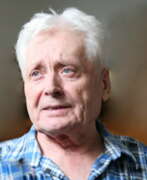

Vasily Pavlovich Borisenkov (Russian: Василий Павлович Борисенков) was a Soviet and Russian artist of the second half of the twentieth and early twenty-first centuries. He is known as a painter and teacher, a representative of the Leningrad school of painting.
Vasily Borisenkov actively participated in Leningrad art exhibitions since 1954, was the author of genre and battle paintings, landscapes and portraits. Among his famous works are the paintings "Difficult Conversation", "Spring", "Strelna. The Beginning of Summer" and many others. The master's works are in museums and private collections both in Russia and abroad.


Mario Botta, a Swiss architect born in 1943, is celebrated for his profound contributions to contemporary architecture. His work is characterized by a robust geometric style and profound respect for historical context, often integrating modern elements with traditional designs. Botta's designs are known for their distinct use of brick and strong shapes, such as circles, squares, and triangles, which make his buildings instantly recognizable.
Among his notable projects are the San Francisco Museum of Modern Art and the Cathedral of the Resurrection in Evry, France. These structures exemplify his approach to blending new construction technologies with classical forms. The museum, in particular, showcases his ability to manipulate space and light, creating dynamic environments for displaying art. His buildings are not just structures but are often considered sculptural works that enhance their surroundings.
Mario Botta's influence extends beyond architecture into design and education, where he has mentored generations of architects. His work is displayed in numerous exhibitions worldwide and serves as a testament to the enduring power of integrating contemporary design with traditional elements. Collectors and experts in architecture appreciate Botta’s unique ability to transform ordinary spaces into extraordinary places.
For those interested in the innovative work of Mario Botta, consider signing up for updates on new project unveilings and auction events related to his creations. This subscription ensures you stay informed about the latest developments and opportunities to engage with Botta's influential designs.


Désiré-Magloire Bourneville was a French physician, neurologist, innovator and educator, and statesman.
Born into a modest family, Bourneville began his medical education in 1860 and for about ten years worked as an assistant to Jean-Martin Charcot, where, together with Paul Régnard, he supervised the publication of "Photographic Iconography of Salpetriere". During the Franco-Prussian War, he served as both surgeon and physician's assistant. Appointed physician at Bissetre, Borneville devoted himself to the medical and educational care of "idiots and epileptics" for whom he organized a service, and later directed the Fondation Vallée in Gentilly until his death. He is considered one of the earliest child psychiatrists.
In 1876, Bourneville was elected a municipal councilor of Paris, three years later he became a general councilor of the Seine, and then a deputy. In this capacity, Bourneville carried out several health reforms: he became the rapporteur for the public assistance budget and the budget for psychiatric asylums, achieved the creation of the first special classes for mentally retarded children, and the first municipal nursing school in Salpêtrière.
Bourneville had many very different talents. Very early on he became interested in medical journalism, where he made a name for himself through the vividness of his articles. In 1873, he founded the journal Progrès Médical, which promoted the tenets of avant-garde medicine, open to pioneering scientific developments (Bourneville published Charcot's lessons) and social issues. He fully developed the theoretical and practical foundations of teaching for the nursing profession. Outraged by the lack of practitioners' professional knowledge of obstetrics, he worked to create a new medical specialty, gynecology. But his main purpose in life was to educate and nurture those who were labeled "idiots" and mentally retarded.


Erdmut Bramke is a contemporary German artist. She was a guest professor at the Stuttgart State Academy of Fine Arts. She has documented 600 paintings, 1500 works on paper, 80 solo exhibitions, 200 group exhibitions and the artistic decoration of numerous public buildings. Erdmut Bramke consistently represents concrete art. Her concern is the purification of art to a pure return to colour and form, structure and rhythm. In her work she strives for law, harmony and order, real content is not her subject.


Isaak Israelievich Brodsky (Russian: Исаак Израилевич Бродский), a distinguished Russian artist, was renowned for his contributions to painting and teaching. Born in Sofievka, Russian Empire, Brodsky's artistic journey led him to become a pivotal figure in the Soviet art scene, primarily recognized for his realistic portraits and social realist works. His dedication to capturing the essence of his subjects, combined with a unique sensitivity to color and form, allowed his art to transcend mere representation, offering insights into the culture and political climate of his time.
Throughout his career, Brodsky was closely associated with significant cultural and political developments in Soviet Russia, becoming an official artist of the Soviet regime. His works, such as the iconic portraits of Lenin and other political figures, not only exemplify his skill but also serve as historical documents, offering a glimpse into the era's social fabric. His commitment to realism and the portrayal of Soviet ideals earned him a prominent place in the art world, influencing generations of artists through his role as a teacher and mentor at the Repin Institute of Arts.
Brodsky's legacy is preserved in numerous museums and galleries, with his masterpieces forming an integral part of Russia's cultural heritage. His ability to intertwine art with historical narrative has made his work a subject of study for art collectors and experts alike. For those intrigued by the depth and historical significance of Soviet art, Brodsky's oeuvre offers a fascinating exploration into the power of visual storytelling.
For collectors and experts keen on delving deeper into the rich tapestry of Russian art, staying informed about Isaac Israelievich Brodsky's work is essential. Signing up for updates ensures exclusive access to news on product sales and auction events dedicated to Brodsky's art, providing a unique opportunity to engage with the history and culture he so vividly depicted. Join us in celebrating the legacy of a true maestro of painting, whose works continue to inspire and captivate audiences worldwide.
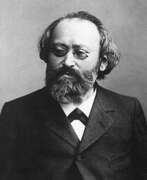

Max Bruch, full name Max Christian Friedrich Bruch, was a German composer and conductor, violinist and teacher of the late Romantic period.
Bruch studied with the composer and pianist Ferdinand Hiller (1853-1857), wrote a symphony at age 14, and won a scholarship that allowed him to study in Cologne. His first opera, Joke, Deceit and Revenge, was performed in 1858. He conducted orchestral and choral societies in Germany, England and Poland, and from 1890 to 1911 he was a professor at the Berlin Academy of Arts.
Bruch was an ambitious and prolific composer. His greatest success during his lifetime was his huge works for chorus and orchestra, Beautiful Ellen (1867) and Odysseus (1872). He was also the author of string concertos and pieces for violin and orchestra. His Violin Concerto No. 1 in G minor (1866) is one of the most popular Romantic violin concertos.


Ferdinand Brütt, full name Ferdinand Martin Cordt Brütt, was a German Impressionist painter.
Brütt began his studies at the Hamburg School of Applied Arts, then continued at the Art School of the Grand Duke of Saxony in Weimar before embarking on an extended study trip to Italy. For many years he lived in the Kronberg artists' colony in Kronberg im Taunus.
Brütt painted more often scenes from public places, particularly court sessions, domestic genre subjects and landscapes. From 1906 to 1913 he created several large wall and ceiling murals for the city of Frankfurt. In 1905 he was commissioned to design a large public hall in the town hall of Frankfurt am Main.
Ferdinand Brütt also taught at the Academy of Arts Düsseldorf, was a member of the Association of German Artists and was a member of the Association of Artists of Malkasten.
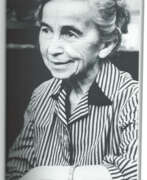

Varvara Dmitrievna Bubnova (Russian: Варвара Дмитриевна Бубнова) was a distinguished Russian painter, graphic artist, and pedagogue, celebrated for her mastery in lithography. Born into a noble family in St. Petersburg, she was deeply immersed in an atmosphere of poetry and music from an early age, which significantly influenced her artistic and intellectual development. Bubnova's education spanned from the Drawing School of the Society for the Encouragement of Arts to the St. Petersburg Academy of Arts, where she was an active member of the avant-garde group "Union of Youth" alongside prominent figures like Mayakovsky, Malevich, and Goncharova.
Her journey took a dramatic turn in 1923 when she moved to Japan, marking the beginning of a transformative period where she not only embraced Japanese art forms like suibokuga and Sumi-E ink drawing techniques but also significantly contributed to Japanese cultural life through her work and teachings. Her unique approach to art and education left a lasting impact on Japanese arts and culture. Among her notable works inspired by her experiences in Japan are "Young Violinist" (1942) and "Village Street. Japan" (1953), showcasing her fascination with Japanese life and aesthetics.
The later years of her life were spent in Sukhum, Abkhazia, where she continued to create vibrant and expressive works, demonstrating a remarkable adaptability and evolution of her artistic style throughout her life. Her works from this period, such as "Behind the Green Door" (1972), highlight her ongoing exploration of color and form. Bubnova's legacy extends beyond her artworks, as she played a crucial role in promoting Russian literature in Japan, contributing to a deeper understanding and appreciation of Russian culture among Japanese audiences.
Bubnova's artworks are part of major collections domestically and internationally, showcasing her diverse talent across various mediums and subjects. Her influence on both Russian and Japanese art scenes underscores her position as a bridge between cultures, celebrated for her artistic innovations and cross-cultural contributions.
For collectors and experts in art and antiques, Varvara Dmitrievna Bubnova's works represent a unique fusion of Russian avant-garde principles with Japanese artistic traditions, making her a fascinating figure whose pieces are a testament to a life spent transcending cultural boundaries. To stay updated on new sales and auction events related to Varvara Dmitrievna Bubnova's works, sign up for updates and immerse yourself in the legacy of this extraordinary artist who effortlessly blended the best of two worlds.


Fyodor Fyodorovich Buchholz (Russian: Фёдор Фёдорович Бухгольц) was a Russian artist of German origin in the late 19th century and the first half of the 20th century. He is known as a painter, graphic artist and teacher.
Fyodor Buchholz painted mainly on historical themes and genre paintings, as well as portraits and landscapes. At the end of the XIX century, the artist was fascinated by Art Nouveau. After the revolution of 1917 he began to create works on the themes of social construction.


Piotr Dmitrievich Buchkin (Russian: Пётр Дмитриевич Бучкин) was a multifaceted Soviet and Russian artist known for his contributions to painting, graphic arts, and teaching. Educated at the Higher Art School at the Imperial Academy of Fine Arts under Vasiliy Mate and Vasily Savinsky, Piotr Buchkin graduated in 1912, embarking on a journey that included travels across Europe to refine his artistry. His works span a variety of genres, including portraits, genre paintings, landscapes, and illustrations, showcasing his versatility across different mediums such as watercolor, pencil, pastels, etchings, oil, and tempera paintings.
Piotr Buchkin's engagement with the art world was profound; he was a founding member of the Leningrad Union of Artists and contributed significantly to the Leningrad School of Painting. Throughout his career, Buchkin participated in numerous exhibitions and was recognized for his talent as a graphic artist and portraitist, adept in various painting techniques. His memoirs, "About that in memory: Notes of an Artist," provide insights into his artistic journey and experiences.
Piotr Dmitrievich Buchkin's works are held in prestigious collections, including the State Russian Museum and the State Tretyakov Gallery, reflecting his esteemed position in the art community. His legacy continues to inspire, as his works are found not only in Russia but also in private collections and museums worldwide.
For collectors and experts in art and antiques, Piotr Buchkin's oeuvre offers a deep dive into the richness of Soviet and Russian art, particularly the Leningrad School. To stay updated on exhibitions, sales, or auctions featuring Buchkin's works, consider subscribing to relevant updates.
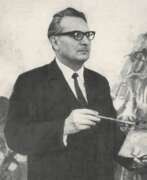

Alexander Gavrilovich Budnikov (Russian: Александр Гаврилович Будников) was a Soviet Ukrainian artist of the twentieth century. He is known as a battle painter.
During the Great Patriotic War Alexander Budnikov worked for a frontline newspaper, created posters and sketches from the battlefields. After the war he studied at the Kiev Art Institute, later became a teacher and professor at this institution. The artist worked in the genre of battle painting, and was also the author of a series of landscapes from different countries. His works are kept in museums in Ukraine, Russia and in private collections in Europe, the USA and Canada.


Daniele Buetti is a Swiss visual artist who works in several modes including installation and intervention. The media he works with includes photography, sculpture, drawing, sound, video and digital forms. He is professor at University of Fine Arts Munster where he has taught since 2004. He lives and works in Zurich, Switzerland and Münster, Germany.
His work has been described as "an expression of world-weariness and the individual’s precarious existential orientation." In the 1990s Buetti's work served as a visual critiques of the consumption of beauty. This work often appropriated images of models and high-fashion consumer products from magazines that were pierced with a ballpoint pen.


Georg Burmester was a German artist of the late 19th - first third of the 20th centuries. He is known as a painter, graphic artist, impressionist, representative of the Düsseldorf art school, and teacher.
Burmester worked mainly in the genres of landscape and marinas, but among his works there are also still lifes, as well as works in the genre of nude. He was a teacher at the Kassel Art School from 1912 to 1930 and was promoted to the rank of professor in 1917.
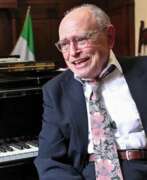

Silvano Bussotti is an Italian composer, painter and opera director, set and costume designer.
Silvano learned to play the violin at an early age, studied harmony and counterpoint at the Cherubini Conservatory in Florence, and studied with various teachers. In addition to music, he was fond of drawing and painting. His first works, influenced by Luigi Dallapiccola and Roberto Lupi, were written in the avant-garde dodecaphonic technique, and he also made extensive use of the aleatoric method. Bussotti was a participant in "anti-music" concerts, for which he created works without any sounds at all.
Bussotti's compositions include numerous pieces for various vocal, instrumental and mixed ensembles. In 1963 he co-founded the Group of 70 (Florence). Between 1968 and 2001 he worked as a director, costume designer and stage designer at the leading opera houses in Italy, La Scala, La Fenice; Massimo (Palermo), Reggio (Turin) and others. In total, he created about 40 opera productions.
Bussotti's art exhibitions are held in various countries around the world. Bussotti is also known for his extravagant graphic scores, in which he found self-expression as an artist, but this hides the meaningful nature of his musical achievements.


Michel Butor was a French writer and poet, associated with the Nouveau Roman literary movement of the 1950s and 1960s. He was known for his experimental writing style, which often challenged traditional narrative structures and explored the relationship between language, identity, and memory.
Butor studied philosophy and literature at the Sorbonne in Paris. In 1954, he published his first novel, "Passage de Milan," which established his reputation as a leading figure of the Nouveau Roman movement.
Throughout his career, Butor wrote more than twenty novels, as well as essays, poetry, and other works. His writing often incorporated elements of travelogue and autobiography, and he frequently collaborated with visual artists on projects that combined text and image.
In addition to his literary work, Butor was a respected teacher and critic, and he lectured at universities around the world. He was awarded numerous honors and awards for his contributions to French literature, including the Prix Renaudot in 1957.
His legacy as an innovative and influential writer continues to be celebrated by literary scholars and readers around the world.


Louis Gustave Cambier is a Belgian painter-painter and sculptor, member of the Royal Academy of Fine Arts in Brussels.
Cambier studied at the Royal Academy of Fine Arts in Brussels and was a co-founder of the Brussels artists' group Le Labeur. During the First World War, he worked as a professor of sculpture at the Académie de Nice and one of his students was Henri Matisse.
Cambier painted landscapes, still lifes and genre scenes, as well as portraits of famous contemporaries, including, for example, a portrait of Winston Churchill.


Michele Cammarano was an Italian realist painter. He is the author of numerous paintings in the battle genre. He studied painting at the Academy of Fine Arts in Naples.
In March 1870, during a trip to Paris, the artist met Gustave Courbet, whose work was close to his own views on art.
